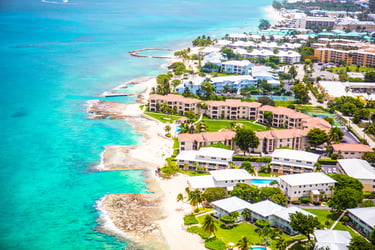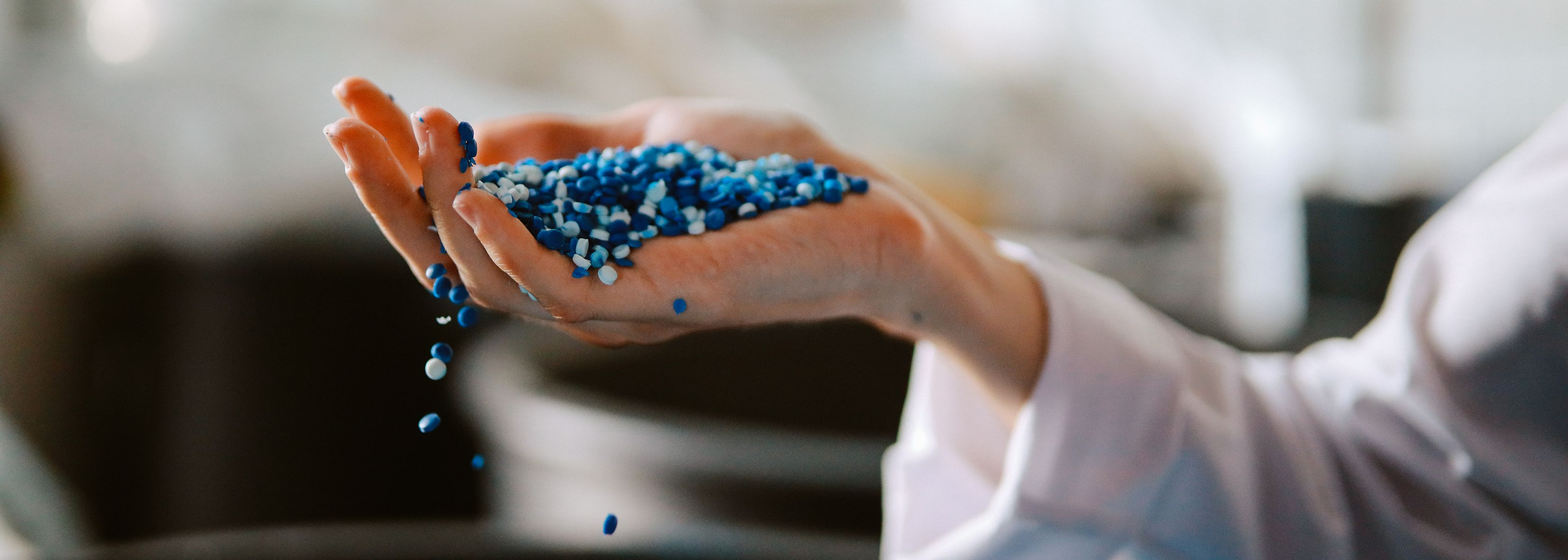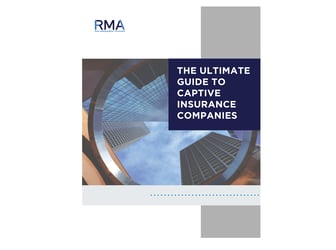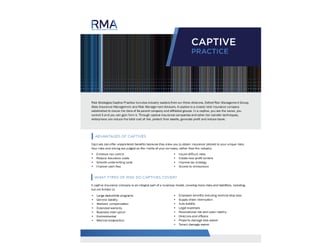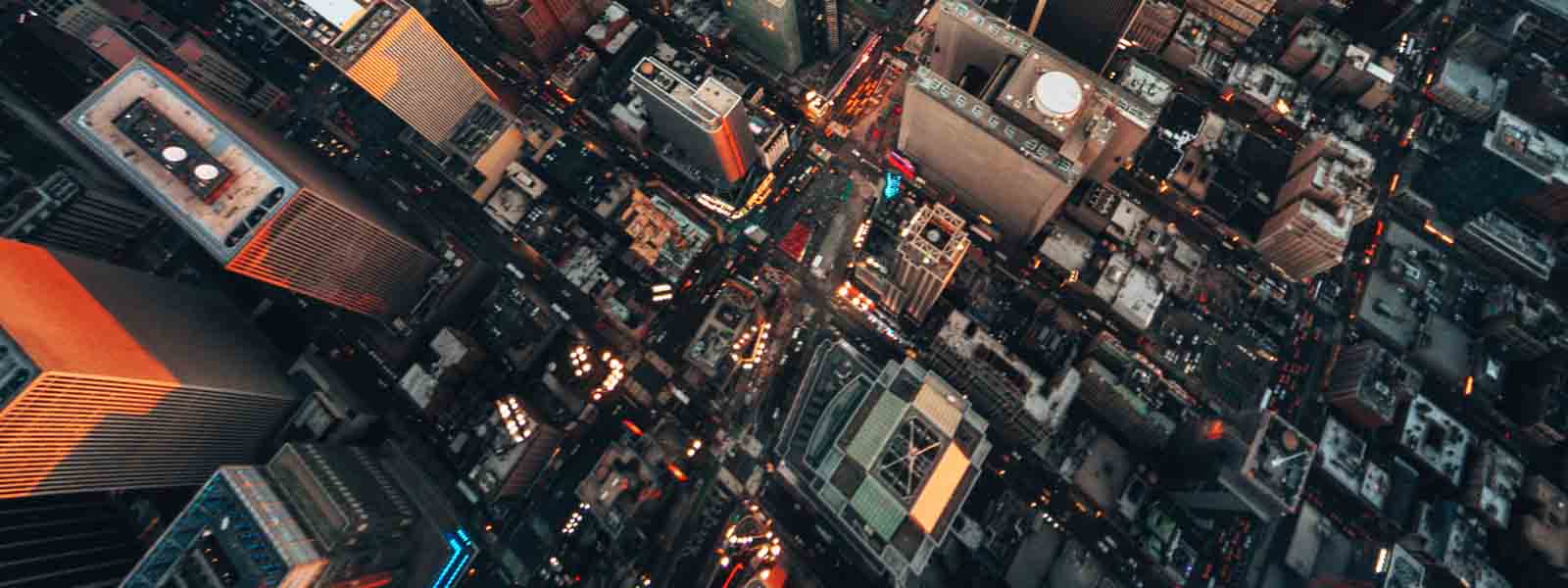The Situation:
Client: The Company has over 25 years of engineering experience in petrochemical and rubber manufacturing. The Company specializes in both off-the-shelf and custom Thermoplastic Elastomer Products. They have gained world approvals in the automotive, building & construction, wire & cable, and medical applications.
Needs: Strategies to reduce the cost of their traditional insurance and insure a large trade credit risk. This coverage was not available to them after a large automaker client filed for bankruptcy protection, leaving the Company with over $1,000,000 in noncollectable invoices.
Planning: Integrate a traditional insurance portfolio with a captive insurance company.
Analysis:
The company is a closely held business with many employees that is working hard to thrive in the turbulent economy. The rising cost of insurance and numerous exclusions have been a source of concern for the owners.
After reviewing the existing insurance portfolio and exclusions, RMA was able to create a captive insurance company that allows the employer to fund some of their risks in their captive insurance company without exposing themselves to catastrophic risk. By setting up a captive insurance company, the owners have the opportunity to reclaim some or all of the dollars between the premiums funded and the actual claims paid out.
Result:
In addition to capturing carrier underwriting profit, the RMA was able to help drive additional savings for the company while providing increased protection. The Company was able to protect its business with the following primary and difference-in-conditions policies:
- Business Interruption – Manufacturers and retailers rely heavily on facilities around the globe to supply products, and any disruption in supply or distribution chains may cause significant interruption and loss to a business. Anything less than full capacity operations may result in significant losses. In the event, the Company cannot acquire the materials needed to meet its production capacity or cannot obtain the inventory needed to maintain its sales.
- Property—All Risk—First-party insurance that indemnifies the owner or user of property for its loss or the loss of its income-producing ability when the loss or damage is caused by a covered peril, such as fire or explosion. The client owns two buildings, and thus, this coverage is needed.
- Earthquake – The company has real property located in earthquake seismic zones 3 or 4 but lacks earthquake insurance. Since most commercial property policies exclude damage from earthquakes and related perils, they have determined that it is important to insure this risk through a captive insurance company.
- General Liability—This coverage will protect the Company against liability claims for bodily injury and property damage arising out of premises, operations, products, and completed operations, as well as advertising and personal injury liability.
- Intellectual Property – With close to 30 patents globally, this coverage would reimburse the Company for legal expenses incurred to defend them against lawsuits alleging that they have committed patent, trademark, or copyright infringement.
- Trade Credit Insurance - This provides coverage against a customer's insolvency, which provides protection against payment default on loan, interest, or scheduled payments. Also known as bad debts insurance. After losing money with a global automobile manufacturer after their bankruptcy, this was and continues to be a big area of concern for the Company as they have a lot of account receivables tied up with many clients.
- Product Liability – Protection against financial loss arising out of the legal liability incurred by an insured because of injury or damage resulting from the use of a covered product or out of the liability incurred by a contractor after a job is completed.
- Product Recall – Insurance coverage for the cost of getting a defective product back under the control of the manufacturer or merchandiser that would be responsible for possible bodily injury or property damage from its continued use or existence. Because of the intricate details of each of their plastic products and the businesses to which they supply their products, if a product were discovered to be defective, it would be imperative for it to be pulled from the manufacturing floor immediately.
Explore
- Solutions
- Captive Insurance
- Captive Insurance Overview
- What is Captive Insurance?
- Definition of Captive Insurance
- Types of Captive Insurance
- Typical Structures of a Captive Insurance Program
- Why Form a Captive Insurance Company?
- Captive Insurance Utilization and Value
- Evaluating a Captive Insurance Program
- How to Setup a Captive Insurance Company
- Operating a Captive Insurance Company
- Captive Insurance Operating Costs
- Retaining Risk vs. Financing Risk
- Risk Distribution Through Captive Insurance
- Taxation of a Captive Insurance Company
- Captive Insurance Domiciles
- News and Insights
- About Us
Practice Leader(s)

Captive Practice Leader, Managing Director

Captive Practice Leader, Managing Director
Max Jong is the Captive Practice Leader and Managing Director at Risk Management Advisors, an alternative risk and captive management firm. Max began his career at Northwestern Mutual in 1994 after graduating from UCLA. Over 12 years, he built a successful financial services practice while heading up an office overseeing 50 professionals in Los Angeles and Irvine, California. The office was perennially one of the top producing organizations in the Northwestern Mutual system.
Max joined his partners at Risk Management Advisors in 2007 as he began to work with more sophisticated mid-market business owners. RMA specializes in the design, formation, and management of captive insurance companies. There’s also an emphasis on self-funded group benefits as well as other creative alternative risk management strategies. The firm assists business owners in better managing their risks without jeopardizing their balance sheets. In 2019, he headed up a merger with Risk Strategies, a Top 10 private national specialty insurance brokerage and consulting firm. Since then, he was appointed as the Captive Practice Leader to oversee the growth and development of the organization.
For five years, Max served as an Independent Director for Fiat Lux Risk and Insurance Company, one of the largest and most sophisticated captive insurance companies. Fiat Lux was established by the University of California Regents to better manage the broad risks of the University of California system.
Max has also been a lifelong supporter of Big Brothers Big Sisters of Greater Los Angeles. He initially volunteered to be a mentor in 1995 and is currently mentoring his second "Little." Max was asked to join the Board of Directors in 2000 and eventually served as their Board Chair. After 20+ years as an active board member, he continues to support the organization by serving as a Trustee.
He is married to Alice, and they’re raising two young children, Hunter and Hayden. Max and Alice are happily married despite her irreparable mistake of going to USC. He loves to travel, golf, and is a hopeful Lakers fan.
Blog
